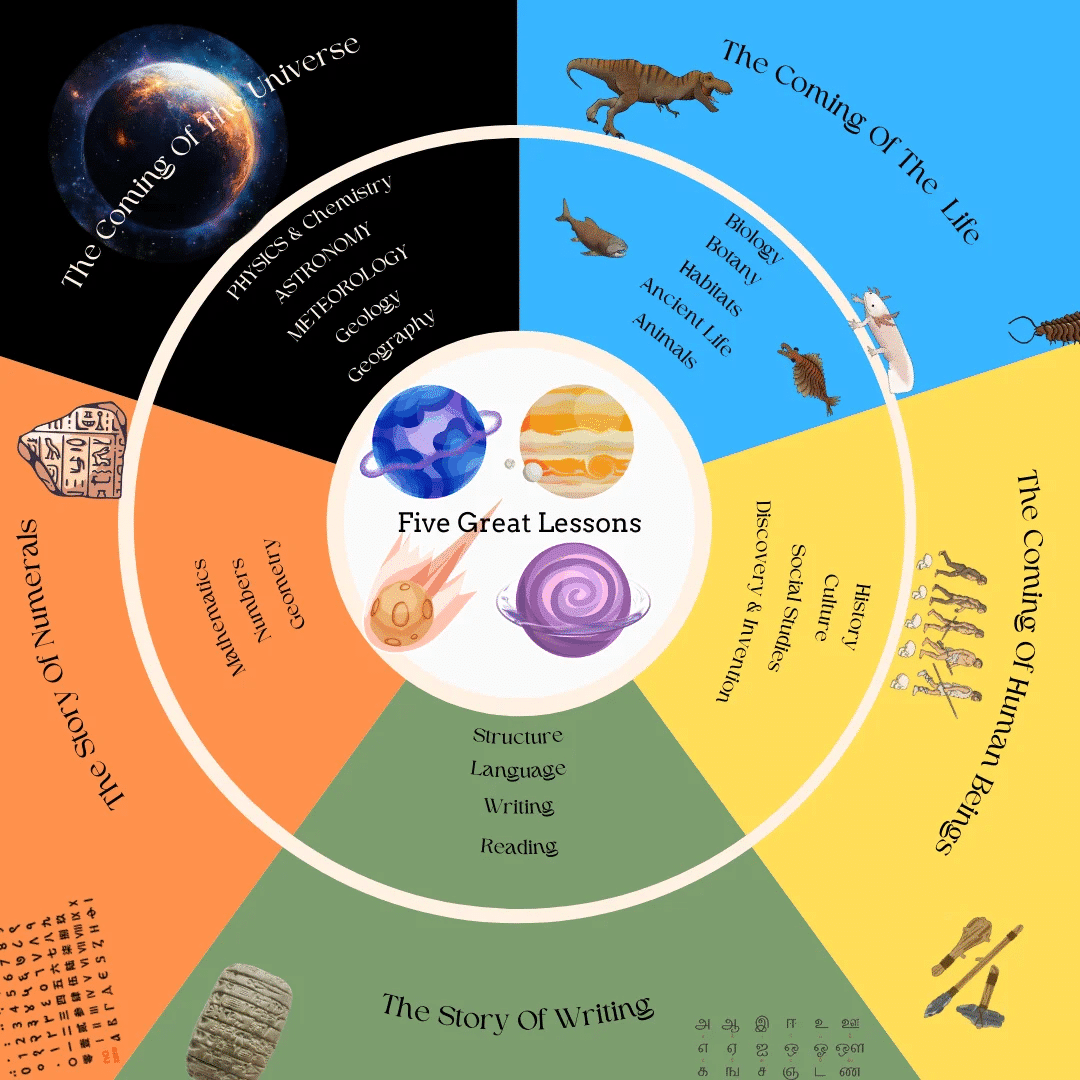Lower & Upper Elementary (6-12 Years)
The Montessori Lower and Upper Elementary syllabus focuses on holistic, hands-on learning to nurture curiosity, critical thinking, and independence.
In Lower Elementary (6–9 years), language includes grammar basics, vocabulary building, reading comprehension, and creative writing. Mathematics covers advanced arithmetic, fractions, geometry, and real-life word problems. Cultural studies introduce history through Great Lessons, physical geography, and basic science like botany and zoology. Grace and Courtesy lessons emphasize social behavior, conflict resolution, and environmental respect, while Practical Life activities focus on advanced motor skills, gardening, and cooking.
In Upper Elementary (9–12 years), language expands to essay writing, literature analysis, advanced grammar, and etymology. Mathematics progresses to algebra, geometry concepts like area and volume, and complex problem-solving. Cultural studies deepen with a focus on civilizations, ecological studies, and science experiments in physics, chemistry, and biology. Grace and Courtesy lessons build leadership and mentoring skills, while Practical Life includes entrepreneurial projects and community engagement. Both levels integrate Cosmic Education, emphasizing the interconnectedness of subjects and the universe, and use Montessori materials for hands-on, individualized learning.

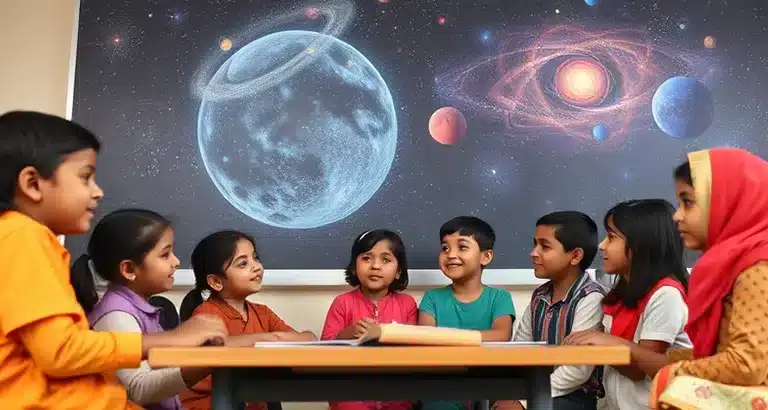
The Story of the Universe
The Story of the Universe Introduces the origin of the cosmos, planets, and natural laws, inspiring children to explore physics, chemistry, and astronomy.
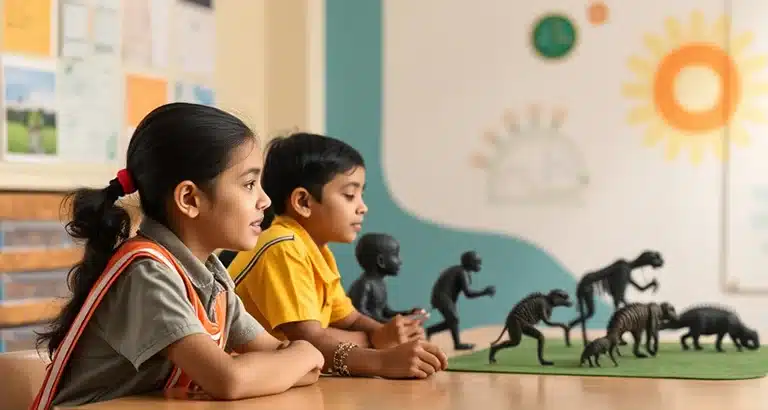
The Story of Life
The Story of Life covers the evolution of life on Earth, from simple organisms to complex beings, prompting studies in biology and ecology.

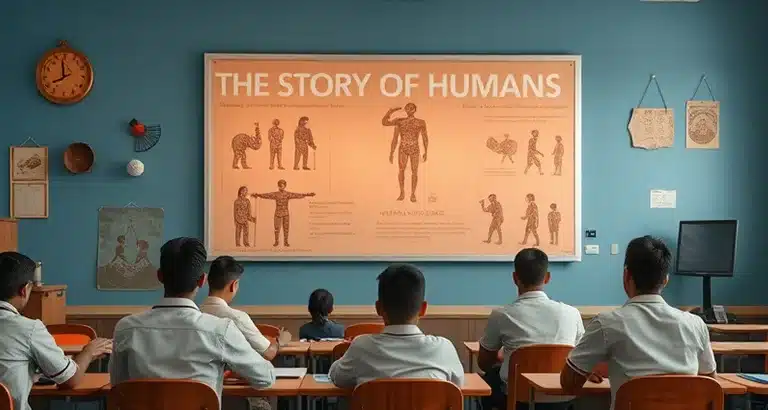
The Story of Humans
The Story of Humans highlights the development of human civilizations, inventions, and cultures, paving the way for history and anthropology.

The Story of Language
The Story of Language shows the journey of communication from early symbols to modern languages, linking to studies in reading, writing, and linguistics.

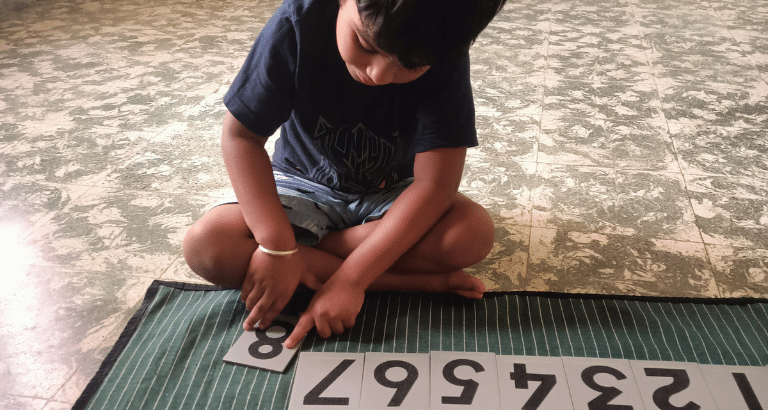
The Story of Numbers
The Story of Numbers traces the history of mathematics, inviting children to explore numbers, operations, and mathematical concepts.
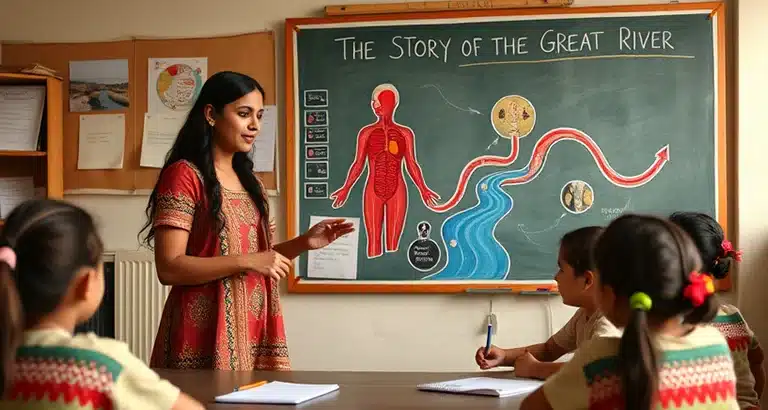
The Story of the Great River
The Story of the Great River in Montessori compares blood flow to a river, showing how it carries oxygen, nutrients, and waste to sustain life.
| Subject | Integration Approach | Examples & Projects |
|---|---|---|
| History | Subjects like History are integrated with Tamil Nadu’s rich cultural heritage. |
Explore Sangam era, Cholas, Cheras, and Pandyas. Montessori timelines and story cards feature Thiruvalluvar, Raja Raja Chola. Cultural projects: crafts, Tamil architecture, temples, festivals. |
| Geography | Lessons focus on Tamil Nadu’s diverse landscapes, ecosystems, and agriculture. |
Montessori maps adapted to Tamil Nadu’s geography (mountains, rivers, regions). Projects on local agriculture, soil types, monsoon importance. Understanding traditional water management (tanks, canals). |
| Science | Science connects with local ecology, flora, and fauna, focusing on sustainability. |
Lessons on local medicinal plants (neem, tulsi) and their uses. Experiments on crops (rice, sugarcane) and organic farming. Environmental conservation: wildlife sanctuaries, marine ecosystems. |
| Traditional Craft-Making | Children connect with cultural roots through hands-on craft activities. |
Kolam designs, weaving palm leaves, pottery, clay modeling. Terracotta projects: shaping clay pots and figurines. |
| Local Art Forms | Art projects expose children to traditional Tamil styles and dance. |
Tanjore painting, kolam, warli-inspired murals. Workshops on folk dances like Karagattam and Kummi. |
| Agriculture & Gardening | Practical farming experiences teach children about agriculture. |
Gardening projects growing native crops. Study of organic farming, traditional irrigation, herbal garden. Farm-to-table activities using school garden produce. |
| Handloom & Weaving | Children learn traditional weaving skills, inspired by Tamil textiles. | Basics of handloom weaving. |


